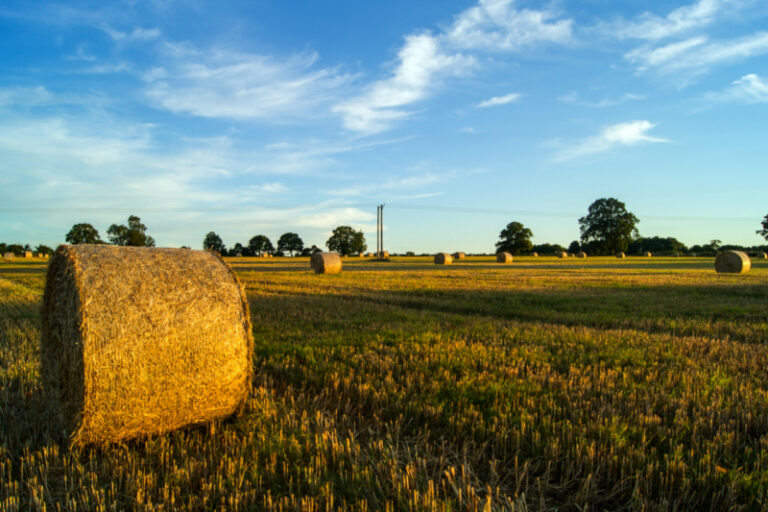What is the UK’s Climate Change Risk Assessment (CCRA)?

Why are Climate Change Risk Assessments needed in the UK?
With average temperatures in the UK having risen by about 1°C since the 1950s, the impacts of climate change are starting to be felt. Given the levels of greenhouse gases already in the atmosphere, further warming as well as an increase in impacts from climate change are inevitable over the coming decades. Hotter, drier summers, milder and wetter winters as well as sea level rise can already be observed, while a projected increase in extreme weather events will lead to more frequent and intense floods, droughts and heat waves across the UK.
To manage these increasing impacts from climate change, the UK will have to adapt and build resilience. England’s National Adaptation Programme sets out what government and others will do to “be ready for the challenges of climate change”, with there being equivalent programmes in Northern Ireland, Scotland and Wales. These programmes are informed by Climate Change Risk Assessments.
How are the Climate Change Risk Assessments prepared?
To set the main priorities for adaptation in the UK and provide evidence of what action works and why it is needed, under the 2008 Climate Change Act the Government is required to publish a Climate Change Risk Assessment (CCRA) every five years. The first CCRA was released in 2012.
The CCRA consists of an Evidence Report and an accompanying Government Report. The independently researched and written Evidence Report contains technical reports and summaries that apply to different sectors and to each nation. These are prepared by hundreds of leading scientists, experts from the private and public sectors, and are scrutinised through an extensive consultation and peer review process.
The CCRA Evidence Report is primarily produced for the UK Central Government and the devolved administrations, but the outputs from the CCRA are publicly available and of value to other public and private sector organisations. Short explainer videos provide an accessible overview of the key findings.
Based on the Evidence Report, the Government Report outlines the Government’s main priorities for adaptation, which can change with each iteration of the CCRA in the face of new evidence.
So far, three CCRAs have been published in full: in 2012 (CCRA1); 2017 (CCRA2); and the third CCRA was published in 2022. The fourth iteration of the CCRA is due in 2027.
The CCRA has seen a number of changes over its three iterations, including to the structure of the assessment, as well as to the consortia of experts responsible for producing the reports.
CCRA1 (2012)
The CCRA1 Evidence Report was commissioned by the Department for Environment, Food & Rural Affairs (Defra) and prepared by a consortium of experts led by the consultancy HR Wallingford. The Evidence Report reviewed more than 700 potential impacts of climate change in a UK context, which was narrowed down to a detailed analysis of over 100 different types of impacts across 11 key sectors: agriculture; biodiversity and ecosystem services; built environment; business, industry and services; energy; floods and coastal erosion; forestry; health; marine and fisheries; transport; and water. The technical and summary reports outlined the likelihood and scale of potential consequences and the urgency of actions needed to be taken to address them. CCRA1 additionally described the policy context and gave an overview of the actions to tackle some of the risks that were already in place.
Based on the CCRA1 Evidence Report, the UK Government Report set out priorities for adaptation under five key themes: agriculture and forestry; business, industry and services; health and wellbeing; the natural environment; buildings and infrastructure.
CCRA2 (2017)
The Evidence Report for CCRA2 was prepared by the Climate Change Committee (CCC), an independent, non-departmental public body established under the 2008 Climate Change Act. The CCC and its Adaptation Committee consist of academic and non-academic experts on climate change (including Swenja Surminski, Professor in Practice at the Grantham Research Institute). The second iteration of the CCRA’s Evidence Report considered a smaller list of 56 priority risks, with a stronger focus on the urgency of specific actions. The accompanying Government Report of the CCRA2 named six priority risk areas: flooding and coastal change; health and wellbeing from high temperatures; water shortages; risks to natural capital; food production and trade; pests, diseases and invasive non-native species.
The changes in approach and scope between CCRA1 and CCRA2 reflect the growing evidence base on climate risks across the UK and the need for urgent action in the previously mentioned priority risk areas.
CCRA3 (2022)
The independent advice report for CCRA3 was prepared by the CCC and informed by the Technical Report, sector– and nation-specific briefings and summaries. The Technical Report was prepared by a consortium of more than 450 experts from more than 130 organisations, led by the University of Exeter in partnership with the Met Office. It outlines the latest understanding of current and future climate change in the UK and an assessment of 61 risks and opportunities across several main areas, including: the natural environment; infrastructure; people and human health; built environment; businesses and international dimensions. CCRA3 informed the National Adaptation Programme in England, published in 2023, and its equivalents in Northern Ireland, Scotland and Wales.
What does the latest evidence from CCRA3 show about risk and adaptation in the UK?
The evidence gathered for CCRA3 shows that the gap between the level of risk in the UK and the level of adaptation underway has widened: in other words, adaptation action is failing to keep pace with the worsening of climate risks.
This Explainer was written by Viktor Roezer and updated by Anna Beswick.

